Fueling Sustainability
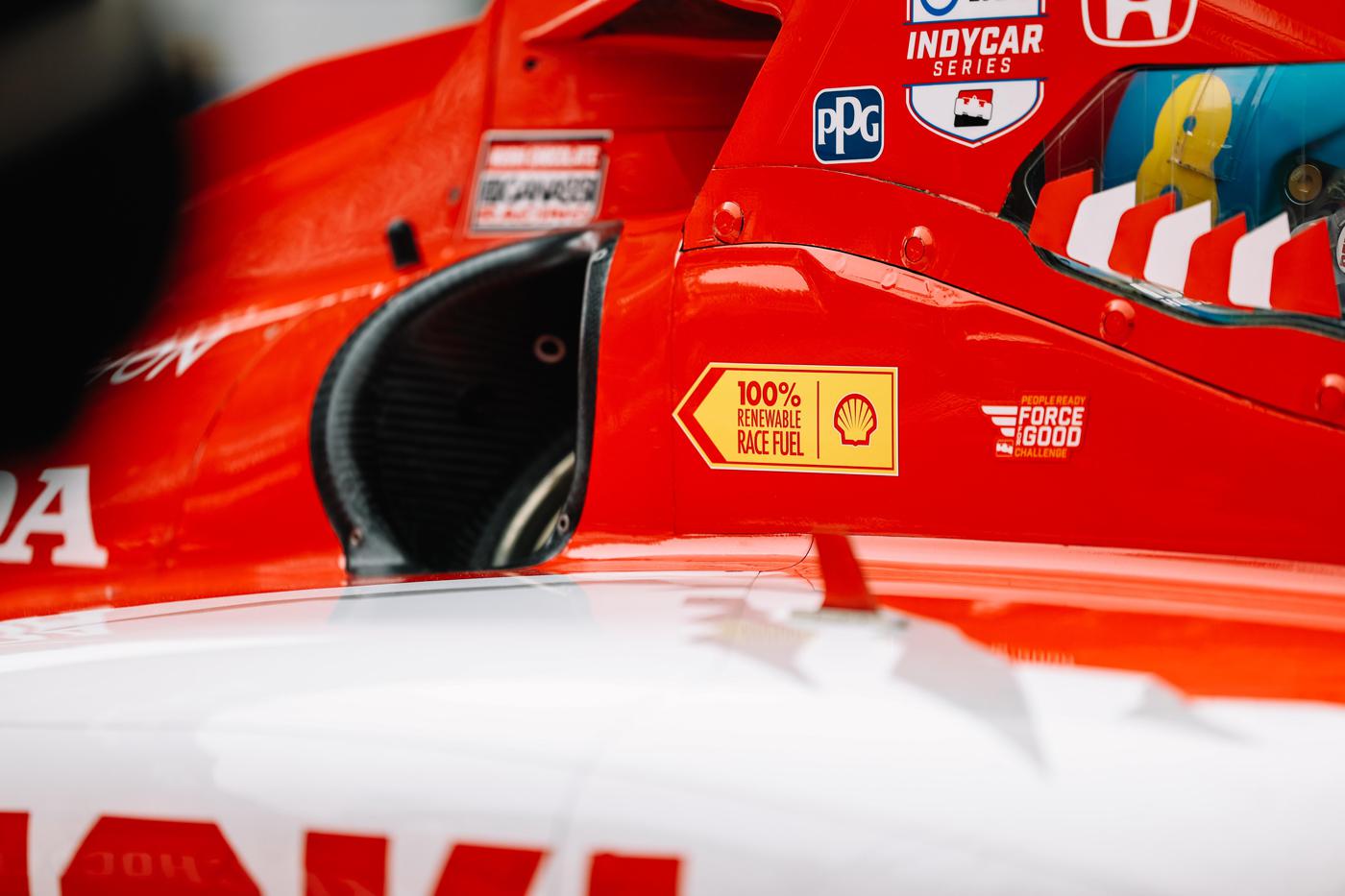
A wide array of newly developed racing fuels is helping reduce the overall environmental impacts of motorsports, while also bringing potent benefits to racers. But creating these fuels comes with a complex set of unique challenges.
Being an imitation usually isn’t a badge of honor. Knockoffs of original items often carry the connotation of sacrifice, of making do with less and just getting by—like being forced to eat a patty made from vegetables while craving a giant, juicy cheeseburger.
When it comes to racing fuels, imitations can sometimes be better than the original. In farms, laboratories, and production facilities around the world, forward-thinking individuals are reinventing the precious liquids that fuel our race cars. In the process, they’re creating fuels that burn cleaner and make more power, with less impact on the environment.
Race sanctions are noticing. Along with electric vehicles (EVs) and other sustainability programs, renewable fuels have become a vital element in the pursuit of greater environmental responsibility throughout the sport. Many of the world’s largest sanctions have introduced fuel blends with significant amounts of renewable content:
• Formula 1 cars currently use hybrid internal combustion/electric powerplants that run a fuel blend consisting of 10% ethanol. In 2026, F1 will switch to a new hybrid engine that will use 100% renewable fuels.
• All FIA Endurance Championship and World Rally Championship cars now run 100% renewable fuel.
• IndyCar introduced ethanol blends to the series in 2006 and ran E85 from 2012 through 2022. Beginning in 2023, the sanction switched to 100% renewable fuel, consisting largely of ethanol.
• NASCAR has run 15% ethanol fuel since the 2011 season, and in late 2022 reached the milestone of 20 million miles driven on-track with the fuel. The series is likely to move to a 100% renewable fuel at some point.
• Starting with the 2023 season, IMSA GTP cars are running exclusively on an R80 fuel blend, which consists of 64% biofuel.
The future of renewable fuels in racing is promising. But like so many other aspects of technical progress in motorsports, getting to the ultimate goal can be difficult. Breakthroughs in renewable fuels are typically won through hard work, determination, and unwavering commitment.
The Devil in the Details
Renewable fuels are nothing new. In the early 19th century, some of the first internal-combustion engines ran on biofuels such as ethanol. Synthetic fuels were developed extensively during World War II to combat fuel shortages among Axis nations in Europe. Now, more than 80 years later, these two technologies make up the primary categories of renewable fuels in use today.
Although many people refer to all renewable fuels as “biofuel,” that term refers specifically to methanol or ethanol fuels made from fermentation of plants or plant-based oils. The different types of these raw materials, called biomass, determine what subcategory a biofuel is considered to be.
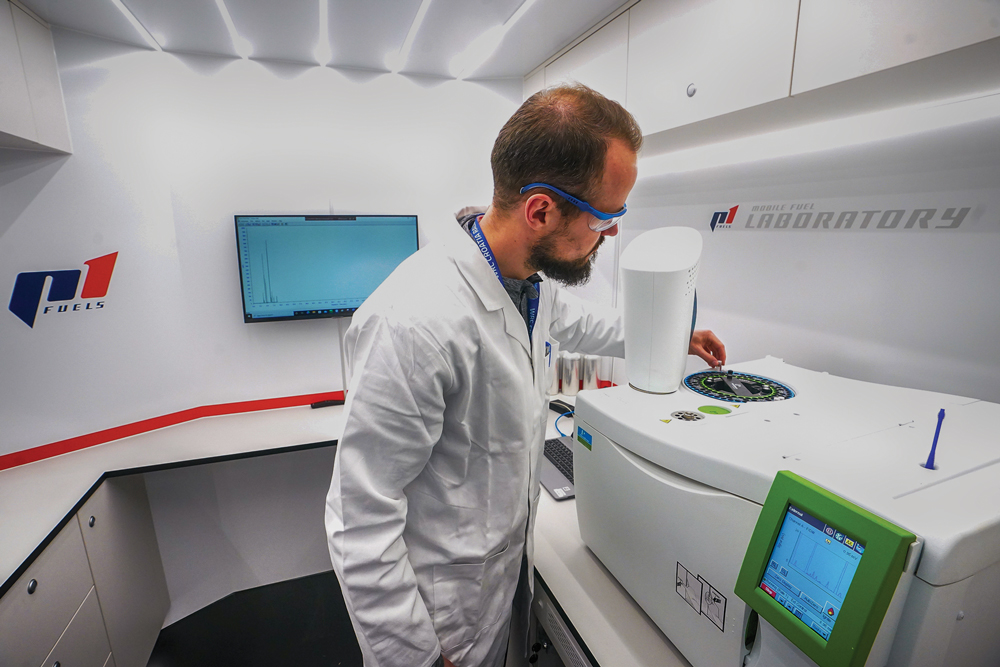
First-generation biofuels are made from crops, such as corn, barley, or sorghum. Second-generation biofuels are made from agricultural residues such as grasses or sugarcane stalks. Third-generation biofuels are made from algae or other microorganisms. All of these biomasses can be fermented into ethanol or methanol, which can be used straight as fuel, blended with gasoline, or converted into biogasoline, which is functionally equivalent to gasoline.
In contrast, synthetic fuels begin as hydrogen and carbon, the raw ingredients of gasoline. These elements are then fused into the desired molecular structure, typically by using the Fischer-Tropsch process in which heat, pressure, and a catalyst are applied to combine the elements. The resulting reaction yields a hydrocarbon fuel that’s functionally the same as gasoline. This too can be used straight or blended with other fuels.
Determining the environmental impact of biofuel and synthetic fuels can be complicated. On one hand, biofuels might appear more environmentally sound. But many biofuels are currently first-generation, made from corn. This is a more efficient and therefore more economical method of producing ethanol or methanol, but it has the disadvantage of diverting food stocks from their primary role as human sustenance, which largely offsets any environmental benefits.
On the flipside, synthetic fuels don’t use any kinds of crops, and the necessary carbon can be pulled from the air in the form of carbon dioxide—a “win-win” for sustainability, in which raw materials are gathered by reducing carbon in the atmosphere. However, the process of fusing hydrogen and carbon into a liquid fuel consumes massive amounts of electricity. In fact, the amount of power needed is so great that the only way it’s considered at all environmentally responsible is if the electricity is generated by renewable sources, such as wind or solar power.
Then there’s the cost. Prices of renewable fuels vary wildly. First-generation biofuels, such as ethanol made from corn, can be less expensive per gallon than gasoline. Perhaps counter-intuitively, second-generation biofuels are actually about twice the price of first-generation biofuels, despite using agricultural waste products. This is because first-generation biomasses can more readily be broken down into simple sugars, making the process much more efficient and therefore cheaper.
Synthetic fuels are generally more expensive yet, largely because of the energy required to manufacture them. Also affecting the costs of all renewable fuels are basic factors of supply and demand. Ethanol has been around for quite some time, and there are plenty of suppliers that can provide it, which keeps prices relatively low. On the other extreme, there are relatively few synthetic fuel manufacturers at this point, which limits quantities and drives up prices.
Because of the generally high prices and limited availability of many renewable fuels, they’re often mixed with gasoline in various proportions to help offset the cost while still improving their sustainability. This is an everyday reality for Mark Walls, director of research development at VP Racing Fuels, in San Antonio, Texas. The company’s R80 renewable fuel now powers the IMSA GTP class, and roughly a third of VP’s 70 fuel blends use renewable components in them.
Determining what those blends will be is a complicated jigsaw puzzle in which cost, availability, and overall environmental footprint have to be balanced carefully with the performance these fuels offer racers. “It’s only as green as you’re willing to pay,” explained Walls. “Everybody wants 100%, until they find out it costs 50 bucks a gallon. Then everything’s not so green at that point. The biggest hurdle for us is the sourcing and availability of the renewable components that are out there. There just aren’t very many options. And if you do find them, they might not be available at the scale you need, or at the price point you need.”
Walls’ take on the process underscores the vast complexity of developing a market-ready renewable fuel for motorsports. That’s besides the fundamental technical questions being answered in development labs. With this array of factors and the interplay between them, it can be difficult to find clear-cut answers on what’s best for the environment, motorsports, and racers when it comes to renewable fuels.
Regardless, many in the industry see renewable fuels as the most promising direction for motorsports to survive in today’s increasingly environmentally aware era. Although EVs are certainly still on the table as far as “green” directions for the sport, renewable fuels have some definite advantages in real-world applications.
Renewable fuels can be introduced with minimal disruption to racing series and the rules that regulate them. They’re generally formulated to be a “drop-in” replacement as much as possible. This means they can be poured into fuel tanks with little or no changes to the rest of the car and its existing setup. At the same time, renewable fuels in many cases make more power, keep engine components cleaner, and emit fewer harmful emissions than gasoline.
The icing on the cake for many in the sport is that renewable fuels allow the cherished visceral elements of racing to continue unfettered. Race cars can go on singing their ground-shaking roar, in contrast to the near silence of EVs.
The Tiger in the Tank
Jay Berry, founder of Ignite Racing Fuel in Marion, Indiana, remembers a time when nobody cared much about renewable fuels. Sanctions didn’t require them, racers weren’t requesting them, and relatively few suppliers were developing them.
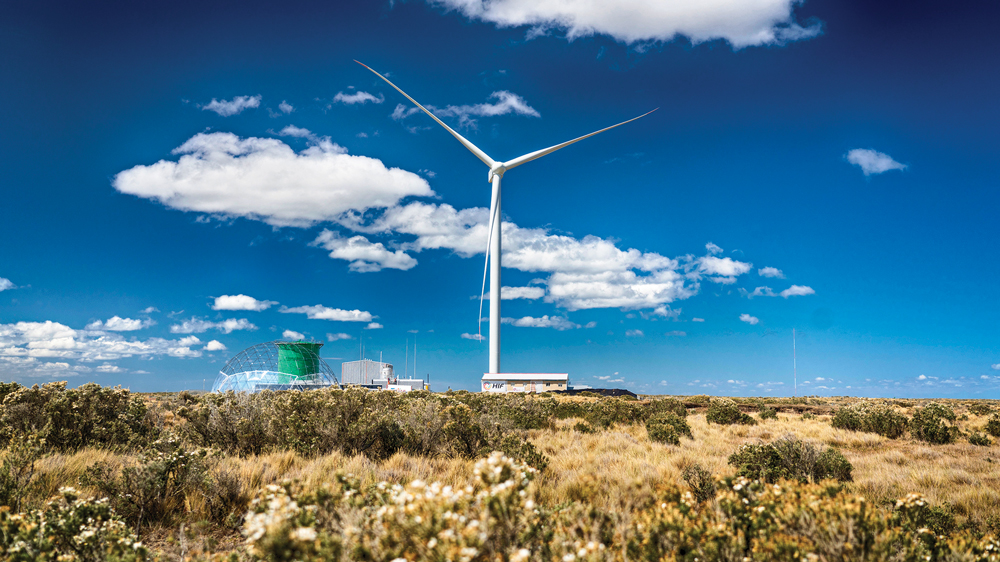
“When I started in 2002, you went to events and nobody knew what ethanol was,” recounted Berry. “This was before there was even pump E85. The reason I created Ignite was because there was nobody out promoting and showing people how great ethanol fuel is on its own merits. We’ve come a long way in educating not just the racer, but engine builders, and along with that, helping consumers understand that ethanol is not a bad fuel. It’s a premium fuel that’s actually better.”
Now his company is finding healthy demand for its biofuels, all of which have very high concentrations of ethanol. The company’s Yellow E98 blend is essentially straight, uncut ethanol. Alongside that are Ignite’s Orange E85 and Red 114 (E90), blends. Berry makes these fuels using first-generation ethanol from corn he grows and processes entirely on his own farm, exactly the same as when he started his company more than two decades ago.
While Berry’s methods and blends haven’t changed much over the years, now racers are warming to the idea of renewable fuels in general, as they’re faced with the possibility of environmentalists shutting down their sport or altering it beyond recognition. That said, Wall has observed that younger racers tend to accept renewable fuels more readily, because they’re less set in their ways and more willing to adapt to new methods.
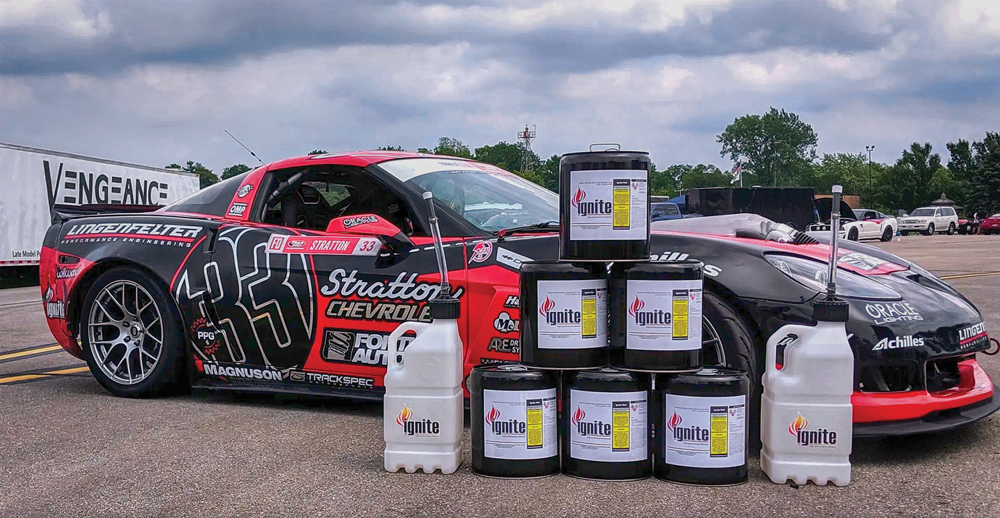
Nonetheless, some old attitudes and perceptions linger. This is particularly true regarding the use of ethanol. Fears about ethanol’s corrosive effects on engines persist, despite the fact that it’s been used in all different ratios and blends for years. It is, however, generally accepted that running ethanol in higher concentrations—most experts say above 10% to 15%—requires changing fuel-system components to avoid risk of damage. Included among these modifications is switching fittings and hoses to PTFE materials, which resist the widest range of fuels.
Synthetic fuels, on the other hand, typically have fewer variables regarding how they run in race engines. Although synthetic gas may not always smell like actual gasoline, it’s generally formulated to be a direct drop-in replacement, and therefore it requires no change to fuel systems. This also applies to ethanol that’s been converted to biogas.
Berry, however, contends that any damage to fuel system components by ethanol is entirely a result of harmful additives and low-quality gasolines often found in pump E85 blends, rather than by ethanol itself. That said, he conceded that it’s much easier to use high ethanol blends with electronic fuel injection than with carburetors.
“It’s hard to run an ethanol fuel with a traditional carburetor,” he said. “Very few guys have really figured out how to make it work. Part of that is because of the variance in pump E85. Ignite’s fuel blends have never changed. Nothing varies. But pump E85 can be anything from 51% to 83% ethanol. So that’s the frustration for the carb guys. They could build the perfect carb and send it out to 10 different people, and it’ll have 10 different fuels running in it.”
Complex Challenges Foster Innovation
For all the advantages renewable fuels offer, significant challenges still need to be solved before they can achieve universal adoption. Cost is the biggest hurdle right now. Many of these fuels are expensive to make and will probably remain so, at least for the near future.
This may change as more suppliers enter the market and the requisite technologies evolve. At the same time, there’s a debate going on between proponents of EVs and those who favor internal-combustion vehicles that run on renewable fuels: Does it make sense to channel massive amounts of electricity into making liquid fuel to be burned at relatively low internal-combustion efficiencies, instead of just putting that electricity into a battery and powering the car directly?
It’s a tough question that defies simple answers; both sides of the argument have their own unique liabilities. “EVs look great if you draw the box around just the car and you don’t look at how the batteries were made, or where the electricity is coming from,” noted Walls. “But as long as you’re efficient in the way you make your renewable fuels, then it’ll make sense all day long. You have to make sure you’re not wasting electricity to make a renewable fuel, where you would have been better off putting electricity back into the grid.”
Martin Popilka surely understands the debate well. He’s the CEO of P1 Racing Fuels in Berlin, Germany. The company makes renewable fuels by converting alcohols into synthetic hydrocarbons. P1 asserts on its website that, even with EVs, there will still be too many internal-combustion cars operating in the decades ahead to meet global environmental targets. Therefore, he believes that eco-friendly renewable fuels will have to play a large part in the overall effort to clean up the planet. This is especially true, Popilka stated in a P1 whitepaper, when the electricity for EVs is generated by fossil-fuel sources such as coal.
Nonetheless, Popilka told PRI that the expense of processing synthetic fuels is a significant challenge that needs to be overcome. “The biggest hurdle we are facing is cost. However, we are working on decreasing that by building up our production facilities and introducing less-energy-intense technologies to produce fuels on a large scale. As production scales and market conditions become more favorable, costs are expected to drop significantly in the coming years.”
In the meantime, P1 fuels are gaining ground in motorsports, having been chosen for the FIA World Rally Championship and Karting World Championship. It’s worth noting, too, that among users of the company’s products are several successful vintage Bentley race cars. “We’re proving that P1 fuels can be used as a sustainable drop-in fuel from prewar racing up to modern car racing such as the WRC, where the fuel is tested to its maximum in all kinds of harsh conditions, from the heat in Mexico to freezing Swedish temperatures.”
Many in the industry echo Popilka’s belief that when the infrastructure for synthetic fuel is more mature, the cost disparity will narrow enough to make it a more viable alternative to fossil fuels and EVs. One company that’s betting on it is Porsche, which has joined forces with Siemens Energy, ExxonMobil, and other international companies to develop synthetic fuels in conjunction with Highly Innovative Fuels Global (HIF Global), in Houston, Texas.
Rather than choosing one side of the electric versus renewable-fuel debate, Porsche is banking on both approaches to some degree. “Electromobility is a top priority at Porsche,” said Porsche CEO Oliver Blume in a press release. “eFuels for cars are a worthwhile complement to that—if they’re produced in parts of the world where a surplus of sustainable energy is available.”
The first major result of the Porsche renewable-fuel consortium is a pilot plant in Punta Arenas, Chile, which became operational in late 2022. The site was chosen in part for its copious wind, which typically blows 270 days a year, allowing an on-site wind turbine to provide eco-friendly, sustainable electricity for the self-contained operation. This power is used to split water into hydrogen and oxygen and combine it with carbon dioxide pulled from the atmosphere to make methanol, and then convert that to gasoline.
Although output from this plant will be relatively meager at around 34,000 gallons per year, it’s just an initial step. The consortium plans to apply the experience and insight it gains from the project to a much larger HIF Global plant to be built in Texas. Construction on this facility is planned to begin in 2024. When fully operational, it’s expected to produce approximately 200 million gallons of fuel per year.
Porsche plans to use the fuel produced at the Chile pilot plant in large part to conduct real-world research in motorsports. The whole annual output of the facility is slated for use in the Porsche Mobil 1 Supercup racing series and in other special projects, such as Porsche Experience Centers.
The Big Picture
The emergence of viable renewable fuel technologies and their widespread adoption by major sanctions throughout the world is an encouraging step for racers. It could be the key to preserving their right to compete in the cars they want indefinitely, no matter how draconian environmental regulations may eventually become.
At the same time, organizations throughout motorsports are scrutinizing the much bigger question of overall sustainability. When all factors are taken into account, race cars aren’t actually the biggest source of carbon emissions in motorsports. Although there may be as many as 60 cars on the track at a major event, that pales in comparison to the thousands of spectators in the stands, many of whom drove more than an hour to get there. Then, behind the scenes are dozens of semi-trucks, racking up thousands of miles hauling equipment from track to track. And blazing through the skies above all that traffic are hundreds of airline flights shuttling team members about.
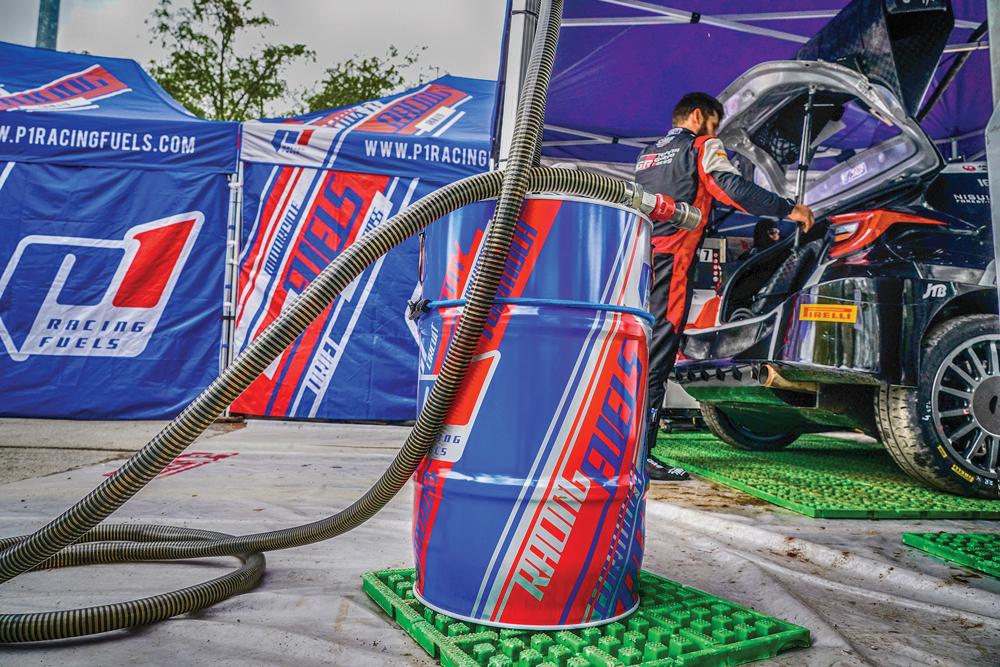
Ultimately, it all comes down to carbon footprint—how much carbon is being put into the atmosphere versus how much is being removed. The goal is to be “net zero,” meaning carbon is taken out of the atmosphere at the same rate that it’s emitted. Carbon footprint takes into account every aspect of how business is conducted. For example, Formula 1’s introduction of renewable fuel is part of the sanction’s much larger goal of becoming net zero by 2030. Also included in that effort are steps such as phasing out single-use plastics, optimizing logistics, using renewable energy when possible, and even converting to remote broadcast operations.
NASCAR has launched a similar program, with the goal of becoming net zero by 2035. At the same time, other major race sanctions also have comprehensive sustainability initiatives in the works, albeit with somewhat less ambitious goals than the NASCAR and F1 net zero efforts.
Alongside sanctions in these sweeping sustainability initiatives are fuel suppliers as well, many of which are looking at the entire process they’re using for developing fuels, manufacturing them, and bringing them to market. “It’s not just the fuel we’re making,” Walls explained about VP’s broader sustainability efforts. “From production, to the electricity in the building, to me driving into work every day, we’re aiming toward a more carbon-neutral footprint.
“This is where we all have to live. Every little bit helps.”
SOURCES
Ignite Racing Fuel
igniteracingfuel.com
P1 Performance Fuels
p1fuels.com
Porsche
porsche.com
VP Racing Fuels
vpracingfuels.com
 MEMBERSHIP LOGIN
MEMBERSHIP LOGIN JOIN PRI
JOIN PRI


